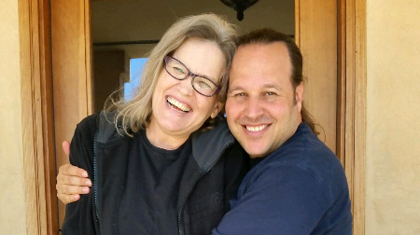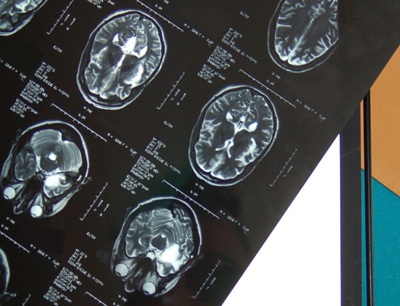
by Guy Lipof, husband and care partner
AUSTIN, TX – My wife, Susie, was diagnosed with Grade III Oligoastrocytoma brain cancer in 1999.
Just a few years earlier, in 1996, the Health Insurance Portability and Accountability Act (HIPAA) was passed into law, making it possible for people to get access to their full medical records. But when it came to digital records, medicine was still in the Mesozoic Era. At Susie’s hospital physicians were carrying clipboards, scans were film-based, and patient records were shared mostly on paper or via fax machine.
Caregiving in the Mesozoic Era
There were no online patient portals to access Susie’s medical information back in 1999, so with each visit we filled out massive amounts of paper forms.
We live in Austin, TX, and Susie’s cancer care was at MD Anderson’s Brain and Spine Center in Houston. It was important for Susie’s physicians to maintain strong communication between the different locations, so our neuro-oncologist, Dr. W.K. Alfred Yung, worked hard to ensure critical data would be shared in a timely fashion not only among her physicians, but also with us. This meant that each radiology report or lab test, whether in Austin or in Houston, was faxed to all of Susie’s physicians… and to us.
My professional background is in software engineering and project management, so it was natural for me to delve into my new role as a caregiver by doing what I do best: managing Susie’s cancer as a project.
Back in 1999, there were no websites or apps for laypersons to track progress of disease or plan for care. I designed my own solutions by taking notes at each doctor visit, designing spreadsheets for lab results, and creating trending graphs. I maintained a portfolio of MRI films and even went so far as to buy a light table for examining Susie’s brain scans. The local library became my go-to source for looking up medical information, especially Latin terms.

I don’t know if the exchange of information between Susie’s physicians and us made a difference in delaying the progression of her disease, but we definitely felt engaged in her treatment and plan for care.
Caregiving in the Digital Era
Four years ago Susie’s cancer progressed to Glioblastoma Multiforme, which is the most malignant form of brain cancer with a five-year survival rate of less than five percent. This is the same diagnosis given to Senators Ted Kennedy and John McCain.
While there have not been many breakthroughs in brain cancer treatment over the last 18 years, much has changed to make it easier to share medical information with patients receiving care at MD Anderson.
Susie and I can login to MD Anderson’s secure, online patient portal where clinical notes, patient schedules, and email is available at our finger tips — and even our phones. And if you are a curious and engaged care partner like myself, you can access lab results, along with radiology, pathology and tumor sequencing reports. Access to this information is also more easily shared with our local physician teams.
Today, I receive a CD instead of films after every scan. My fax machine and light table are collecting dust. And now I can focus my full attention on what matters most: Susie.
Guy Lipof is a practice leader for IBM Watson Health. Learn more about Susie and Guy’s journey on Guy’s blog at http://blog.greenObjects.com. Follow Guy on Twitter at @Project2Program.




You must be logged in to post a comment.